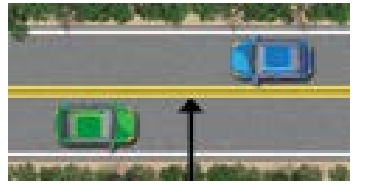Oregon Driver Manual
1/298
Earn XP
Description and Tags
Information was taken from the Oregon DMV's 2024-2025 edition of the Driver Manual. Not affiliated with the Oregon DMV.
Name | Mastery | Learn | Test | Matching | Spaced |
|---|
No study sessions yet.
299 Terms
Regulatory Signs -- Prohibitive
Prohibits certain actions or movements and increases safety by controlling the flow of traffic through intersections
What color are regulatory prohibitive signs?
Red
What shape is a stop sign?
Octagon
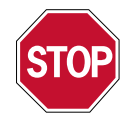
Stop sign
Come to a complete stop. Yield to other vehicles and stop and stay stopped for pedestrians crossing in marked or unmarked crosswalks. When it is safe, you may enter the intersection.
What shape is a yield sign?
Triangle

Yield sign
Reduce speed and yield right of way. If needed, stop the same as you would for a stop sign.
What shape is a Do Not Enter sign?
Square
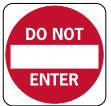
Do not enter sign
Warns you not to enter a road or freeway. You will see this sign if you are going the wrong way.
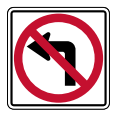
Do not make a left turn
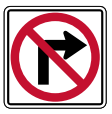
Do not make a right turn
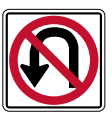
Do not make a U-turn
Regulatory signs-- Other
Tell you what to do at a certain point. They are posted at or near where the requirement applies.
What color and shape are non-prohibitive regulatory signs?
Rectangular with black words or symbols on a white background
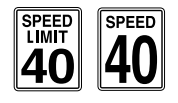
Speed Limit sign
Indicates the maximum speed in miles per hour. Signs may be electronic and may change based on current conditions.

One Way sign
Traffic flows only in the direction of the arrow

Right Turn Permitted Without Stopping sign
May appear below a stop sign. Traffic turning right may turn without stopping. Other traffic must stop and yield right of way.

Except right turn sign
Same as a Right Turn Permitted Without Stopping Sign

Lane-Use Control signs
Used where turns are required or permitted from lanes as shown

A traffic island, median, or obstruction divides the road ahead. Keep to the right.

Share the center lane for left turns from both directions

Do Not Pass sign
Indicates that you may not pass

No Turn on Red sign
You may not turn during the red light. You must wait for the signal to turn green.

High Occupancy Vehicle sign
This lane is reserved for vehicles carrying at least two or more persons, as noted on the sign. A white diamond may be painted on the lane.
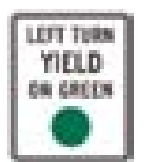
Left Turn Yield on Green sign
On a green circular signal, yield the right-of-way to oncoming traffic and pedestrians until it is safe to turn.
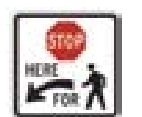
Stop Here for Pedestrians sign
This sign may appear near a crosswalk. Stop at the stop line when a pedestrian is in the crosswalk.
Warning Signs
Alerts you to known possible hazards or a change in road conditions ahead
What color are warning signs?
Yellow
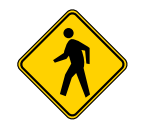
Be alert for people crossing your path. These signs may include a flashing yellow beacon that indicates a pedestrian is crossing, has recently crossed, or is about to cross.
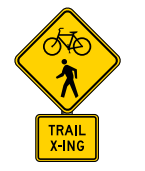
People riding bicycles and pedestrians regularly cross the road in the area
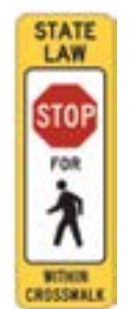
In-Street Pedestrian Crossing sign
This sign may appear at a crosswalk. Stop when a pedestrian is in the crosswalk.
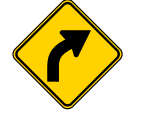
There is a curve ahead
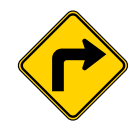
There is a sharp turn in the road ahead.
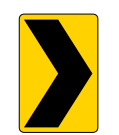
Chevron sign
A sharp curve or change in the direction of the road is at the sign.
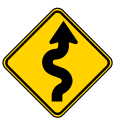
The road contains a series of turns or curves.
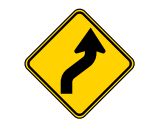
The road ahead curves to the right, then left.
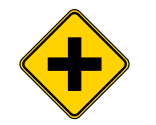
A four-way intersection is ahead. Cross-traffic may enter the road.
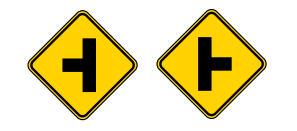
A "T" intersection is ahead. Traffic may enter the road from the left or right.
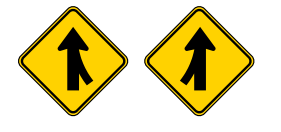
Traffic is merging from the side shown.
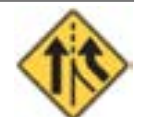
Two roadways join together. You do not need to merge.
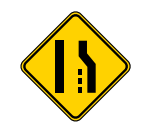
The indicated lane ends soon. Vehicles in that lane must merge into the through lane.
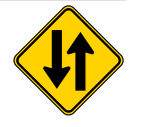
The one-way road joins a two-way road ahead. You will be facing oncoming traffic.
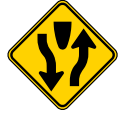
These signs indicate the beginning or end of a divided highway. Keep to the right.
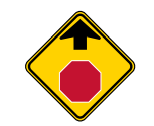
Stop Ahead sign
There is a stop sign ahead. Slow down and prepare to stop.
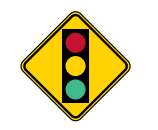
A traffic signal is ahead. Slow down and be ready to stop.
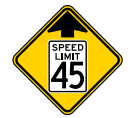
A reduced speed limit is ahead. Prepare to slow down.
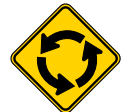
There is a roundabout intersection ahead.
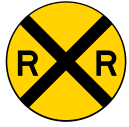
A railroad crossing is ahead. You may have to stop.
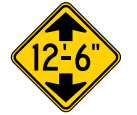
The overpass ahead has low clearance. Do not proceed if your vehicle is too tall to pass under it.
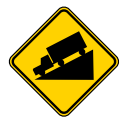
A steep grade is ahead
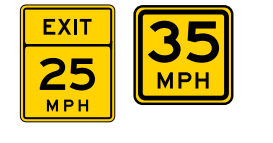
Advises the safe speed for freeway ramps and curves. This sign may be used with other signs. Signs may be electronic and may change based on current conditions.
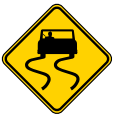
The pavement is unusually slick when wet.
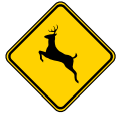
Deer often cross the road in this area. Be alert. Slow down if you see deer or other wildlife.

Route sign
Shows you which route you are on and if the road is an interstate, U.S. route, or state highway
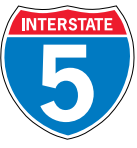
Interstate Route
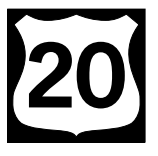
U.S. Route
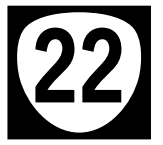
State Highway
What color are guide/information signs?
Green
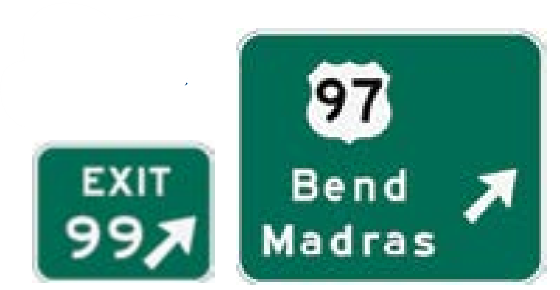
Guide or information signs
Give exit information or show the direction of roads or cities. The number on an exit sign helps you know what exit to take.
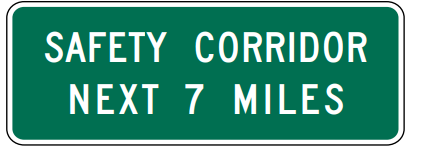
Safety Corridors
Designated stretches of highway with more fatal and serious injury collisions than the statewide average. Turn on your lights for safety. Signs identifying safety corridors may include diamond-shaped flags.

Historic, Cultural, and Recreational signs
Points to historic and cultural locations. They also point to scenic areas, picnic grounds, and parks.
What color are Historic, Cultural, and Recreational Signs?
Brown

Motorist Service signs
Tells you about services or facilities along the highway. These signs may indicate gas, food, and lodging are available at the next exit, a rest area is ahead, an electric vehicle charging station is available, or a facility or parking area is accessible to a person with a disability. They can also indicate the road to a hospital.
What color are Motorist Service signs?
Blue
Traffic Signals
Control the right of way and provide for a smooth, orderly flow of traffic
If a traffic signal appears dark, such as during a power failure, you should…
Stop as if there are stop signs in all directions
Steady Circular Red traffic signal
Stop and remain stopped until the signal changes
What turns can be made at a steady circular red traffic signal?
Unless a sign or a police officer states otherwise, you may… When entering a two-way road, turn right, and when entering a one-way road, you may turn right or left in the direction of the one-way road.
Flashing Red or Dark traffic signal
Treated the same as a stop sign
Red Arrow traffic signal
Stop and remain stopped until the signal changes, except for allowed turns on red. The same turns allowed for a steady red signal are allowed for a red arrow
Steady Circular Yellow traffic signal
Warns you that the signal is about to turn red. Stop before entering the intersection. If you cannot stop safely, drive carefully through it.
Flashing Yellow traffic signal
Slow down and proceed with caution.
Yellow Arrow traffic signal
Warns you that the signal is about to turn red. Stop before entering the intersection, or if you cannot stop safely, drive carefully through it.
Flashing Yellow Arrow traffic signal
You may make the movement indicated by the arrow, but first you must yield to pedestrians and oncoming traffic. Oncoming traffic has a steady green signal.
Steady Circular Green traffic signal
All movements (straight ahead, left turns, or right turns) are permitted, unless prohibited by a sign. Left turns must first yield to pedestrians and oncoming traffic. Right turns must first yield to pedestrians.
Green Arrow traffic signal
A steady green arrow means you have the right of way and may make the movement indicated by the arrow.
Drive on the right side of the road except when…
Passing another vehicle going in the same direction as you, driving to the left of center to pass an obstruction, a road is marked for one-way traffic, a road has three marked lanes and the center lane is a passing lane, or you are directed by emergency personnel or other persons directing traffic
When a road has no center line and traffic moves in opposite directions…
Drivers must give at least half the road to oncoming traffic
If you must drive to the left of the center line to go around a road hazard or for any other reason…
You must yield to oncoming traffic
Yielding
You must slow or stop to allow another vehicle or pedestrian to continue safely
When you enter or cross a road from an alley, driveway, or parking lot not controlled by signs and signals…
Stop before you enter or cross
Change lanes only …
When you can do so safely
Speed Limit
The maximum speed considered safe for the area under ideal driving conditions
When does a speed limit of 15 mph apply?
When driving in alleys or narrow residential areas
When does a speed limit of 20 mph apply?
When driving in any business district or within a school speed zone
When does a speed limit of 25 mph apply?
When driving in residential districts, in public parks, or on ocean shores, if vehicles are permitted
When does a speed limit of 55 mph apply?
When driving on all roads and highways not meeting any other definition unless otherwise posted
What are the speed limits for interstate highways?
Speed limits will vary
Digital speed signs
Speed signs that use road, weather, traffic, and visibility sensors to lower the speed limit when conditions require drivers to slow down
Two types of digital speed signs
Variable Advisory Speed and Variable Speed Limit
Variable Advisory Speed signs
Yellow signs that say "advisory speed". These signs recommend a speed based on driving conditions like heavy traffic, poor weather or a slippery road (such as heavy rain, fog, ice, or snow) These are not speed limits, but police may enforce them through the basic rule law.
Variable Speed Limit Signs
Black and white signs that say "speed limit" These signs change the speed limit based on driving conditions like heavy traffic, poor weather, or a slippery road (such as heavy rain, fog, ice, or snow). Police may enforce these signs like any other speed limit sign.
How do slower speeds improve safety?
Improves line of sight and provides more time to stop
The basic rule
You must drive at a speed that is reasonable and cautious for existing conditions. The basic rule applies on all roads at all times.
If you drive slower than the normal speed of traffic…
You must use the right lane or drive as closely as possible to the right curb or edge of the road, unless you are preparing to make a left turn.
Racing
Any acceleration or speed contest or the making of a speed record. It is illegal.
Yellow Pavement Markings
Used to separate traffic moving in opposite directions (center line) and to mark the left edge of one-way roads and ramps, two-way turn lanes, and painted medians
Solid yellow line
Marks the left edge of one-way roads and ramps
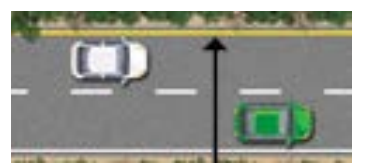
Broken yellow center line
Indicates a two-way road used for traffic traveling in opposite directions. Passing is allowed for both directions of travel.
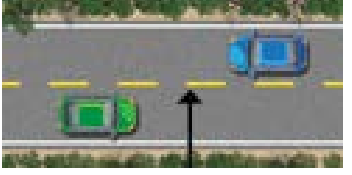
Double center line consisting of a solid yellow line and broken yellow line
Indicates where passing is allowed. A broken yellow line on your side of the lane indicates you are allowed to pass. A solid yellow line on your side of the lane indicates you are not allowed to pass.
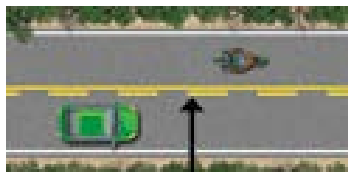
Double solid yellow line
Indicates passing is not allowed for both directions of traffic. You may turn left, to enter or exit a roadway, across double solid yellow lines after waiting for oncoming traffic to clear.
